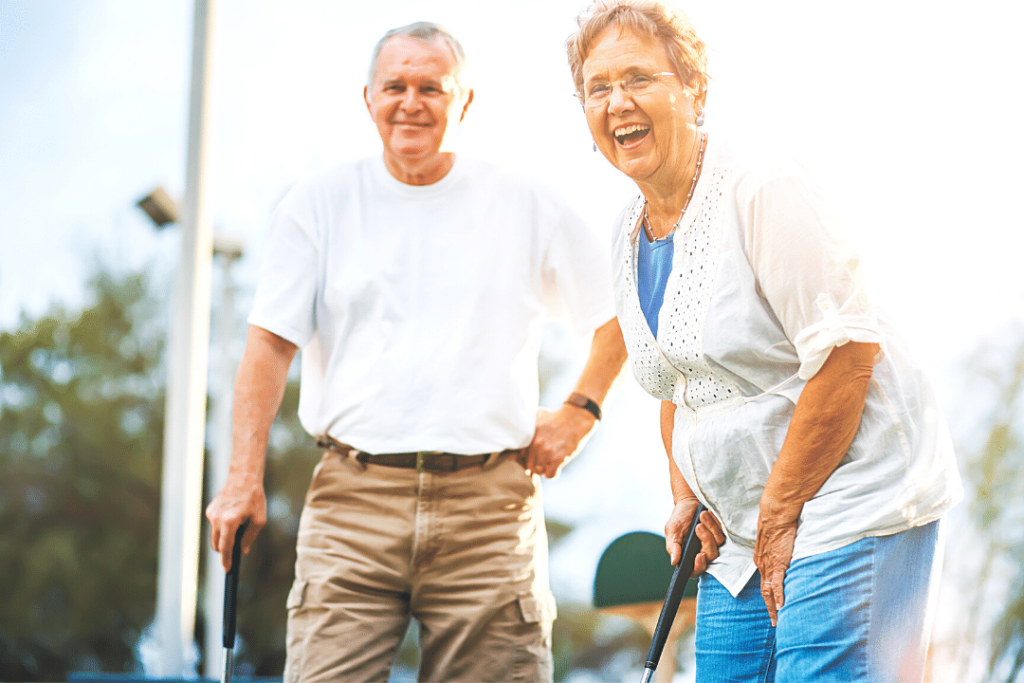After receiving a cancer diagnosis, many patients often wonder if it’s still possible to find the strength and enjoy the physical activity and sports as they did before they were sick.
In fact, the American Cancer Society encourages physical activity during and after treatment, noting that exercise can provide numerous physical and mental benefits. The bottom line is that sport plays a beneficial role in fighting cancer.
A prime example would be breast cancer.Recent studies have shown that the risk of developing breast cancer is reduced by up to 20 percent by staying active. Likewise, the risk of relapse is also much less in women who play a sport or exercise regularly. An exercise routine of just three hours per week would reduce the risk of recurrence by 20 percent. For women who exercise or play a sport for nine hours each week, the rate rises to 50 percent.
There are significant benefits to exercise. The side effects of treatment can be better tolerated, as well as a reduction in tiredness and pain. Sports and exercise are an effective way to reduce stress and combat anxiety, and it helps to strengthen joints and muscle.
What Sports Are Best For You?
For many cancer patients, doctors advise walking as an excellent way to get some exercise. Beyond walking, what and how much you should do depends on several things.
For example, if you were very active before your cancer diagnosis, there is a good chance you can keep up much of your usual exercise routine when you feel up to it. If you were not physically active before your cancer diagnosis, you should talk to your doctor before you begin an exercise program. It would help if you got the OK from your medical team that your exercise plan is appropriate for your current level of fitness.
When You Have Cancer, Exercise And Sport Should Be Supervised
Personalized programs can be developed based on your age, condition, and medical history. It’s important to have support as a cancer patient in regaining control over your body. Your therapist must have a good understanding of the disease’s impact that the exercise can have. Work closely with your doctor and physical therapist.
It is also essential to keep in mind other conditions you may have, such as diabetes or heart issues, as they may affect the types and amount of exercise right for you. As a general rule, walking is good for nearly everyone. If you haven’t been particularly active, begin with short walks and build yourself up.
Try Golf
Of course, an ever-popular sport among cancer patients involves hitting a golf ball while taking that walk. After all, every golfer also knows that golf is nothing more than a walk spoiled by a small, white ball.
As much as it is exercise, golf can also serve as a refuge, as much as it is restorative when it comes to cancer patients. Golf is a natural fit for particular challenges in cancer recovery, even beyond the physical benefit. Even more so than other activities, golf promotes conversation and camaraderie, giving both the exercise and some support structure. Keep in mind, however, that if your blood pressure is an issue, and unless you’re a master with the sand wedge, try and keep it in the fairway or as they say in the golf world, take a mulligan!
Our Sports Recommendations
We recommend exercise that involves symmetrical movements, such as walking, swimming, and cycling.
Symmetrical movements are safe and healthy for the spine. At our clinic, we have a mini-trampoline for our patients, which is beneficial for the lymphatic system. We would caution patients not to drain themselves.
We need energy to heal. So do exercises with the purpose of:
- getting your circulation going
- boosting your energy levels
- producing healthy and happy hormones
- socializing
- better digestion
- better sleep
… there are so many reasons to make sure moderate exercise is a part of your health regime!
Just don’t wear yourself out, pushing yourself to build muscle.
Final Thoughts
So whether you’re looking to head to the course, take a walk or head out on the bicycle, be sure that while working toward regaining control over your body, it is vital to have a good understanding of the disease’s mechanisms and the impact exercise can have.
Additional read: How To Build A Brand New Body In Just 12 Months
